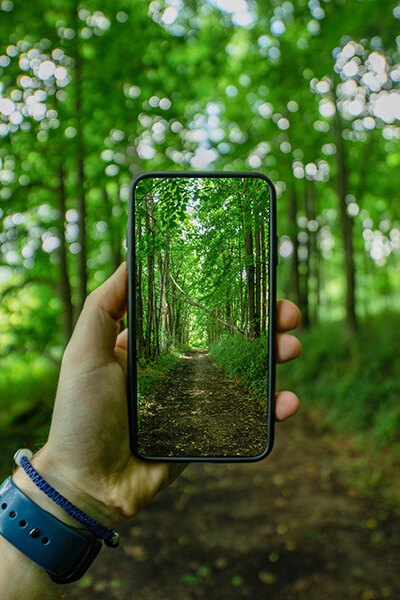Reclaiming Our Attention Span with Nature
March 2022
by Suez Jacobsen
Focus: A Villanelle
(a poetry form with strict rules about lines and rhymes)
Concentration flits and runs and hides
Awareness always fleeting,
Coming in and out like tides
Sometimes the mind abides,
More often though the bleating,
Concentration flits and runs and hides.
Ideas dashing in the waves, like rides
On white caps at the shore deleting
Coming in and out like tides.
One day making noticeable strides
Meditation while I’m eating?
Concentration flits and runs and hides.
Today there are those vibes
Showing up and then retreating
Coming in and out like tides.
Inspirations from idea’s brides
Come together, almost meeting,
Concentration flits and runs and hides
Coming in and out like tides.
The irony here is that to write this poem, to get the lines and rhymes in the right pattern, I had to focus. But if you’re like me and so many others, focusing seems a lot harder than it used to be. Too many distractions—many of them technology intrusions that run the mind off the rails.
But is this perceived loss of focus just a myth, a fleeting feeling? Research says no. One study by Microsoft in 2015 asserted a goldfish could beat us in an attention-span stare down. It found that we humans could focus for about eight seconds. The goldfish? Nine.
According to the report, we could have easily beaten the goldfish in 2000, about the time digital dominance was beginning. Then, we could focus for 20 seconds. This slide in our ability to focus is alarming when we realize the eight-second data are pre-pandemic, before Zoom calls, where we could mute, turn off our cameras and check out—even in the middle of a meeting—often to check yet another screen. Can you believe that the average person checks their phone 30 times an hour?
Dr. Bobbi Wegner at the Harvard Graduate School of education explains the science behind the screen-induced scatter brain. Because screen use produces increased levels of dopamine, a “reward drug,” screen time lures us in the same way cocaine does. She says, “The more people are on screens, the more they are building a chemically dependent habit”—a habit that shreds our concentration. Our average YouTube persistence? 2.7 minutes.
If you haven’t lost your focus by now, you might be wondering what this has to do with Great Old Broads for Wilderness. Most obvious is that getting out into nature gives us an opportunity to turn off our screens (if we resist checking steps and maps every few minutes).
In addition to preventing further damage by removing the source, nature can help us reclaim our focus through what scientists call Attention Restoration Therapy (ART). We know intuitively how good nature is for us—physically, spiritually, and emotionally. But research also shows that nature can reverse the decline in our ability to focus and help us concentrate better and be more present.
One study done with Australian students illustrates the power of even small doses of nature. Students were asked to do inane computer tasks that required focus. Halfway through the exercise they took a break. One group of students looked out a window at a flowering green roof. while the other looked at a concrete rooftop. When they returned to their tasks, the students who took a green break made fewer mistakes. Even a short exposure to nature restored focus for a boring task.
There are dozens of studies on the power of nature to improve cognition, memory, and attention, increase happiness, reduce stress, and make us better humans in our relationships with other humans and our fragile environment.
Fundamentally these powerful results are all linked to E.O. Wilson’s “biophilia” hypothesis— the idea that all living things are connected and that we humans have an innate pull to the natural world, our larger family.
The power of nature calling us—and the threat of losing a meaningful connection to the wild—inspires Broads to do what we do. We all need longer attention spans, and are grateful that time in nature can help heal our flitty fly brain. But it’s much bigger than that. We want to make sure that generations to come—who may never have a truly technology-free day in their lives—still have wild places to restore focus and commune with their world.
Wild Restoration
Wind in her ears.
Water flowing by.
Shelter from the fears.
Balm for many years
Watching wild ones die.
Wind in her ears.
Catchall for her tears
Through the by and by,
Shelter from the fears.
The wild woman steers
Up the mountain high.
Wind in her ears.
No more jeers
Only a deep, deep sigh.
Shelter from the fears.
Deep connection steers
Full attention nigh.
Wind in her ears.
Shelter from the fears.


